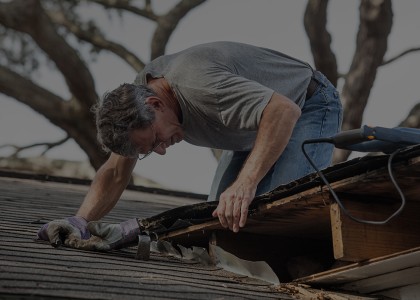The Trump administration’s proposed budget for energy efficiency is a bad sequel to the slash-and-burn budget it proposed last year. It would cut to pieces many effective energy efficiency programs. Like last year’s budget proposed, it would eliminate help for low-income families and seniors from the Weatherization Assistance Program, and help for states and emergency preparedness from the State Energy Program. It would cut overall new funding for the Office of Energy Efficiency and Renewable Energy by more than 70%, and would end the effective Advanced Research Projects Agency-Energy. Fortunately, it looks like the Congressional audience is not going to buy tickets to this movie.
If adopted, the budget would attack programs that accomplish the administration’s own goals: creating jobs, driving economic growth, and ending wasteful spending. It would end TIGER grants, which are model transportation infrastructure investments. And it would cut the Federal Energy Management Program, which helps save billions of taxpayer dollars.
One difference in the sequel is that it would not kill ENERGY STAR®; instead, it would fund the program entirely from fees. We’re glad they now see the value of helping consumers recognize efficient products and buildings. But relying on fees would still threaten the independence and the reliable funding that are essential to the great success of ENERGY STAR.
Today we are releasing a set of fact sheets that show the impact of some of the programs under attack. They estimate both what the programs are saving now, and what would be lost if the attacks succeed. The fact sheets also include a few stories about people who have benefitted from these programs.
These fact sheets describe the value of seven key programs:
- The Department of Energy (DOE) appliance standards program sets minimum efficiency levels for about 60 consumer and commercial products. It already saves the average family almost $500 each year in energy and water bills.
- The Environmental Protection Agency (EPA) vehicle emissions program sets emissions requirements and fuel economy labels for cars and trucks. If allowed to take effect, the 2017–25 standards will help Americans save $370 billion through 2030.
- The DOE Building Energy Codes Program helps states and local governments develop and implement energy codes for homes and commercial buildings. It saves the average family with a new home $260 in energy bills each year.
- The ENERGY STAR® program labels efficient products and runs efficiency programs for homes, commercial buildings, and industry. It saves as much electricity as 30 million homes use in a year.
- DOE Industrial Assessment Centers train college students to help small and medium-sized manufacturing plants save energy. They have assisted more than 18,000 plants.
- The DOE State Energy Program helps state governments advance energy efficiency, renewable energy, and energy security. Additional investments could save as much as $7 billion through 2040.
- The DOE Weatherization Assistance Program (with added funding from the Low Income Home Energy Assistance Program) makes energy efficiency improvements to the homes of low-income families. The families save an average of $4,200 in lifetime utility bills.
Energy efficiency saves consumers money, makes businesses more competitive, reduces energy imports and strain on energy supplies, cuts air pollution, and helps grow the economy. Federal programs have been an important contributor to these benefits in several ways. Federally funded research and development at national labs and universities have enabled today’s light bulbs, refrigerators, and building controls. The ENERGY STAR label and other voluntary programs like Industrial Assessment Centers help consumers and businesses learn how to save energy and money. Assistance programs like the State Energy Program help others make the needed investments. Fuel economy and appliance efficiency standards protect consumers and the environment by setting minimum efficiency levels for new vehicles and products.
These programs succeed by addressing market barriers that prevent consumers and businesses from adopting beneficial energy efficiency measures. They use national labs to do pre-commercial research that the varied industries could not do on their own. They provide credible information on measures that cannot be seen. And they ensure that consumers, including renters and home buyers who often cannot choose the energy efficiency features in their homes, are not saddled with excessive energy bills. These programs also are highly cost effective. From a small federal investment, they leverage billions of dollars of market investment, which in turn yields trillions of dollars in savings on energy bills.
What does that mean for Americans? Elena Chrimat started a small business, Ideal Energy, that does home energy upgrades in Tucson, Arizona with help from Home Performance with ENERGY STAR. Debra Gann learned to teach students about the science of energy and energy conservation at an energy education camp the State of Tennessee put on with help from the State Energy Program. The Boral Bricks plant in Muskogee, Oklahoma got expert assistance in saving energy from Oklahoma State University, one of 28 Industrial Assessment Centers around the country.
We haven’t seen the final reel for 2018 yet, as Congress has still not passed appropriations bills for this year, and the 2019 sequel has barely begun. The House and the Senate both proposed milder cuts, and the new budget deal should make more money available. We still hope these vital programs will escape with some cuts and bruises or even be able to bulk up. So, we invite your help to make sure that people like Elena Chrimat and Debra Gann, and companies like Boral Bricks, do not become victims of these budget cuts.
For more information on our methodology, please download the full set of fact sheets.




